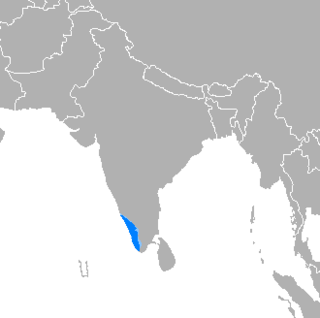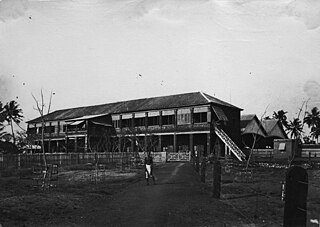
Malayalam is a Dravidian language spoken in the Indian state of Kerala and the union territories of Lakshadweep and Puducherry by the Malayali people. It is one of 22 scheduled languages of India. Malayalam was designated a "Classical Language of India" in 2013. Malayalam has official language status in Kerala, Lakshadweep and Puducherry (Mahé), and is also the primary spoken language of Lakshadweep and is spoken by 35 million people in India. Malayalam is also spoken by linguistic minorities in the neighbouring states; with a significant number of speakers in the Kodagu and Dakshina Kannada districts of Karnataka, and Kanyakumari, Coimbatore and Nilgiris district of Tamil Nadu. It is also spoken by the Malayali Diaspora worldwide, especially in the Persian Gulf countries, due to the large populations of Malayali expatriates there. They are a significant population in each city in India including Mumbai, Bengaluru, Delhi, Kolkata, Pune etc. Malayalam is closely related to the Tamil language.

Malayalam, the lingua franca of the Indian state of Kerala and the union territories of Lakshadweep and Puduchery, is one of the six classical languages of India. Malayalam literature comprises those literary texts written in Malayalam, a South-Dravidian language spoken in the Indian state of Kerala. The first travelogue in any Indian language is the Malayalam Varthamanappusthakam, written by Paremmakkal Thoma Kathanar in 1785. Malayalam literature has been presented with 6 Jnanapith awards, the second-most for any Dravidian language and the third-highest for any Indian language.
V. C. Sreejan is a literary critic writing in Malayalam. Born in 1951, he retired in 2007 after working as Reader in English in Government Brennen College, Thalassery. He has published eleven books in Malayalam. In 2003 he was awarded the Kerala Sahithya Akademi's C.B. Kumar Award' for his work Arthantharanyasm.

Thunchaththu Ramanujan Ezhuthachan was a Malayalam devotional poet, translator and linguist. He was one of the prāchīna kavithrayam of Malayalam literature, the other two being Kunchan Nambiar and Cherusseri. He has been called the "Father of Modern Malayalam", the "Father of Modern Malayalam Literature", and the "Primal Poet in Malayalam". He was one of the pioneers of a major shift in Kerala's literary culture. His work is published and read far more than that of any of his contemporaries or predecessors in Kerala.
The Malayali people are a Dravidian ethnolinguistic group originating from the present-day state of Kerala in India, occupying its southwestern Malabar coast. They form the majority of the population in Kerala and Lakshadweep. They are predominantly native speakers of the Malayalam language, one of the six classical languages of India. The state of Kerala was created in 1956 through the States Reorganisation Act. Prior to that, since the 1800s existed the Kingdom of Cochin, the Kingdom of Travancore, Malabar District, and South Canara of the British India. The Malabar District was annexed by the British through the Third Mysore War (1790–92) from Tipu Sultan. Before that, the Malabar District was under various kingdoms including the Zamorins of Calicut, Kingdom of Tanur, Arakkal kingdom, Kolathunadu, Valluvanad, and Palakkad Rajas.

Manipravalam is a macaronic language found in some manuscripts of South India. It is a hybrid language, typically written in the Grantha script, which combines Sanskrit lexicon and Tamil morpho-syntax. According to language scholars Giovanni Ciotti and Marco Franceschini, the blending of Tamil and Sanskrit is evidenced in manuscripts and their colophons over a long period of time, and this ultimately may have contributed to the emergence of Manipravalam. However, the 14th century Sanskrit work Lilatilakam states that Manipravalam is a combination of Dravidian and Sanskrit. Generally, it is agreed that it was a combination of Middle Tamil and Sanskrit.
Azhvanchery Thamprakkal or Azhvanchery Samrāṭ is the title of the senior-most male member of the Nambudiri Brahmin feudal lords of Azhvanchery Mana in Athavanad, Kerala, South India. They had the right over Guruvayur, and were the titular head of all Nambudiri Brahmins of Kerala. The Lord of Azhvanchery based at Athavanad and the Lord of Kalpakanchery based at neighbouring Kalpakanchery were usually present at the coronation of a new Zamorin of Kozhikode. Kalpakanchery Thamprakkals were related to the Nambudiris of Panniyoor while Azhvanchery Thamprakkals to those of Chowwara.
The term Kerala was first epigraphically recorded as' (Keralaputra) in a 3rd-century BCE rock inscription by the Mauryan emperor Ashoka of Magadha. It was mentioned as one of four independent kingdoms in southern India during Ashoka's time, the others being the Cholas, Pandyas and Satyaputras. The Cheras transformed Kerala into an international trade centre by establishing trade relations across the Arabian Sea with all major Mediterranean and Red Sea ports as well those of Eastern Africa and the Far East. The dominion of Cheras was located in one of the key routes of the ancient Indian Ocean trade. The early Cheras collapsed after repeated attacks from the neighboring Cholas and Rashtrakutas.

The culture of Kerala has developed over the past millennia, influences from other parts of India and abroad. It is defined by its antiquity and the organic continuity sustained by the Malayali people. Modern Kerala society took shape owing to migrations from different parts of India and abroad throughout Classical Antiquity.

Mushika dynasty, also spelled Mushaka, was a minor dynastic power that held sway over the region in and around Mount Ezhi (Ezhimala) in present-day North Malabar, Kerala, India. The country of the Mushikas, ruled by an ancient lineage of the Hehaya clan of the same name, appears in early historic (pre-Pallava) south India and it is believed that Mushika dynasty has their descents from Heheya Kingdom. Early Tamil poems contain several references to the exploits of Nannan of Ezhimalai. Nannan was known as a great enemy of the pre-Pallava Chera chieftains. The clan also had matrimonial alliances with the Chera, Pandya and Chola chieftains. The Kolathunadu (Kannur) Kingdom, which was the descendant of Mushika dynasty, at the peak of its power, reportedly extended from Netravati River (Mangalore) in the north to Korapuzha (Kozhikode) in the south with Arabian Sea on the west and Kodagu hills on the eastern boundary, also including the isolated islands of Lakshadweep in the Arabian Sea.

Vyloppilli Sreedhara Menon was an Indian poet of Malayalam literature. Known for his works such as Kudiyozhikkal, Kannikkoythu and Mambazham, Menon was the founder president of the Purogamana Kala Sahitya Sangham, an organisation of Kerala-based artists, writers and art and literature enthusiasts. He was a recipient of several honours including Sahitya Akademi Award, Kerala Sahitya Akademi Award for Poetry, Vayalar Award and Odakkuzhal Award.
Malayalam poetry is poetry written, spoken, or composed in Modern, as well as Old and Classical, Malayalam.

North Malabar refers to the geographic area of southwest India covering the state of Kerala's present day Kasaragod, Kannur, and Wayanad districts, and the taluks of Vatakara and Koyilandy in the Kozhikode District of Kerala and the entire Mahé Sub-Division of the Union Territory of Puducherry. Traditionally North Malabar has been defined as the northern portion of the erstwhile Malabar District which lies between Chandragiri River and Korapuzha River. The region between Netravathi River and Chandragiri River, which included the portions between Mangalore and Kasaragod, are also often included in the term North Malabar, as the Kumbla dynasty in the southernmost region of Tulu Nadu, had a mixed lineage of Malayali Nairs and Tuluva Brahmins.

Religion in Kerala is diverse. According to 2011 census of India figures, 54.73% of Kerala's population are Hindus, 26.56% are Muslims, 18.38% are Christians, and the remaining 0.33% follow other religions or have no religion. As of 2020, Hindus, Muslims, Christians and others account for 41.5%, 43.9%, 13.9% and 0.7% of the total child births in the state, respectively.

Chaliyam is a village situated at the estuary of Chaliyar in Kozhikode district of Kerala, India. Chaliyam forms an island, bounded by the Chaliyar in the north, and River Kadalundi in south, and the Conolly Canal in the east. It is located just opposite to Beypore port. Chaliyam was the former terminus of the South-West Line of the Madras Railway. Chaliyam is also famous for the Guinness World Records holder Muhammed Adil, a P.M who covered around seven km in the Chaliyar River with his hand and legs tied with ropes.
Karintamil is a hypothetical term used to refer to the western coastal dialect of Middle Tamil spoken in ancient Kerala until the 9th century CE or possibly later. It is thought to be the earliest predecessor of the modern Malayalam language. The Sangam literature can be considered as the ancient predecessor of Malayalam.

Old Malayalam, the inscriptional language found in Kerala from c. 9th to c. 13th century CE, is the earliest attested form of Malayalam. The language was employed in several official records and transactions. Old Malayalam was mostly written in Vatteluttu script. Most of the inscriptions were found from the northern districts of Kerala, those lie adjacent to Tulu Nadu. The origin of Malayalam calendar dates back to year 825 CE.

South Malabar refers to a geographical area of the southwestern coast of India covering some parts of the present-day Kerala state. South Malabar covers the regions included in present-day Kozhikode taluk of Kozhikode district, the whole area of Malappuram district, Chavakkad taluk of Thrissur district, and Palakkad district, excluding parts of Chittur taluk. The Fort Kochi region of Kochi city also historically belongs to South Malabar. The term South Malabar refers to the region of the erstwhile Malabar District south to the river Korapuzha, and bears a high cultural similarity to both the Cochin and the North Malabar regions.
Unnichiruthevi Charitam is one of the ancient Manipravalam written during the Middle Malayalam period. Unnichiruthevi, the daughter of a dancer named Rayarambilla is the heroine in it. In the poem, Devendran comes to earth, falls in love with Unnichiruthevi, and reaches her house after seeing the sights. Unnichiruthevi Charitham, which is written between the 13th century to 15th century AD has its place in various fields like language, literature, and social and national history. It is one of the oldest works in Malayalam and is considered a work that reflects the social history of the time it was written.











